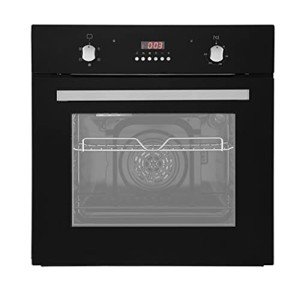The Ultimate Guide to Buying a Built-In Oven
In the world of contemporary cooking appliances, built-in ovens stand apart for their seamless integration into kitchen cabinetry, visual appeal, and advanced cooking technologies. They offer a plethora of functions and a structured style, dealing with both culinary lovers and daily cooks. Nevertheless, choosing the right built-in oven can be overwhelming offered the wide range of options readily available in the market. This short article serves as a thorough guide, highlighting key factors to consider when buying a built-in oven, popular features, and responses to often asked questions (FAQs).
Why Choose a Built-In Oven?
Built-in ovens offer many advantages, consisting of:
- Space Efficiency: They are designed to suit existing cabinets, optimizing kitchen area.
- Visual Appeal: With a range of designs and surfaces, built-in ovens improve the general look of a kitchen.
- Advanced Features: Many come equipped with state-of-the-art technology, making cooking simpler and more precise.
- Customization: Built-in ovens can be set up at eye level or below counter height, using versatility based upon individual preference.
Secret Considerations When Buying a Built-In Oven
Here are necessary elements to consider before purchasing:
1. Size and Dimensions
Before selecting a built-in oven, it is vital to measure the available space. Standard built-in ovens typically fall under 2 primary classifications:
| Oven Size | External Dimensions | Internal Capacity |
|---|---|---|
| Single | 24-30 inches broad | 3-5 cubic feet |
| Double | 30-36 inches broad | 5-10 cubic feet |
Make sure that the picked model fits your kitchen cabinetry both in width and height.
2. Kind of Oven
Built-in ovens been available in different types, including:
- Conventional Ovens: Uses heating components above and below for basic baking and roasting.
- Convection Ovens: Employs a fan to circulate hot air, providing even cooking.
- Wall Ovens: Installed vertically at eye level for much easier gain access to.
- Steam Ovens: Uses steam to prepare food, maintaining nutrients and moisture.
3. Fuel Type
Built-in ovens are offered in various fuel types:
- Electric: Often warms more evenly, ideal for baking.
- Gas: Offers instant temperature control, terrific for roasting and broiling.
- Dual Fuel: Combines the best of both worlds with a gas cooktop and electric oven.
4. Features and Technology
Modern built-in ovens come with a myriad of features that enhance the cooking experience:
- Smart Technology: WiFi-enabled designs allow users to control the oven from another location via an app.
- Self-Cleaning: Reduces the effort required to preserve a clean oven.
- Postpone Start: Lets you configure the oven to begin cooking at a predetermined time.
- Multiple Cooking Modes: Options for baking, broiling, roasting, and more.
5. Brand name and Price
Selecting a trusted brand name can ensure quality and dependability. Relative rates among different brand names can aide in decision-making. Here's a quick introduction of popular brands and their cost ranges:
| Brand | Avg. Price Range | Significant Features |
|---|---|---|
| Bosch | ₤ 1,000 - ₤ 3,000 | Smooth style, dependable efficiency |
| Whirlpool | ₤ 800 - ₤ 2,500 | User-friendly controls |
| KitchenAid | ₤ 1,200 - ₤ 3,500 | Ingenious features, trendy designs |
| GE Appliances | ₤ 900 - ₤ 2,800 | Range of sizes and options |
Setup Considerations
Installation of a built-in oven is a crucial aspect that should not be overlooked. It's highly recommended to employ an expert when installing a built-in oven. They can resolve electrical or gas line issues and guarantee that the oven is fitted safely in the cabinets.
Upkeep Tips
Maintaining a built-in oven is important to extend its life-span and performance.
- Clean Regularly: Wipe down surfaces and avoid letting spills become baked-on.
- Usage Appropriate Cookware: This avoids damage to interior surface areas and improves cooking performance.
- Inspect Seals: Inspect the door seals frequently for wear and tear to maintain energy efficiency.
Frequently Asked Questions About Built-In Ovens
1. How do I understand which size built-in oven to buy?
Procedure the area you have readily available and compare it to the oven dimensions. Requirement sizes usually range from 24 to 30 inches for single ovens.
2. Can I install a built-in oven myself?
While it's possible to set up a built-in oven without expert assistance, working with an experienced specialist is recommended for security, particularly with gas or electrical connections.
3. What is the typical life-span of a built-in oven?
Usually, built-in ovens last about 10-15 years with proper maintenance.
4. Are built-in ovens energy effective?
Energy efficiency varies by model. Look for energy scores or environmentally friendly features when picking an oven.
5. Do built-in ovens need unique cabinetry?
Yes, they are created to fit specific cabinets sizes. Ensure the kitchen cabinetry is built to accommodate the desired oven's measurements.
A built-in oven is an excellent financial investment that can substantially improve your cooking experience and kitchen visual. With various sizes, types, and advanced functions, understanding your needs and preferences is essential for making the best choice. By thinking about measurements, fuel type, and brand credibility, you can confidently choose a built-in oven customized to your way of life. Eventually, visit the up coming document -chosen built-in oven will not only elevate your cooking abilities however likewise function as a spectacular focal point in your kitchen for several years to come.

